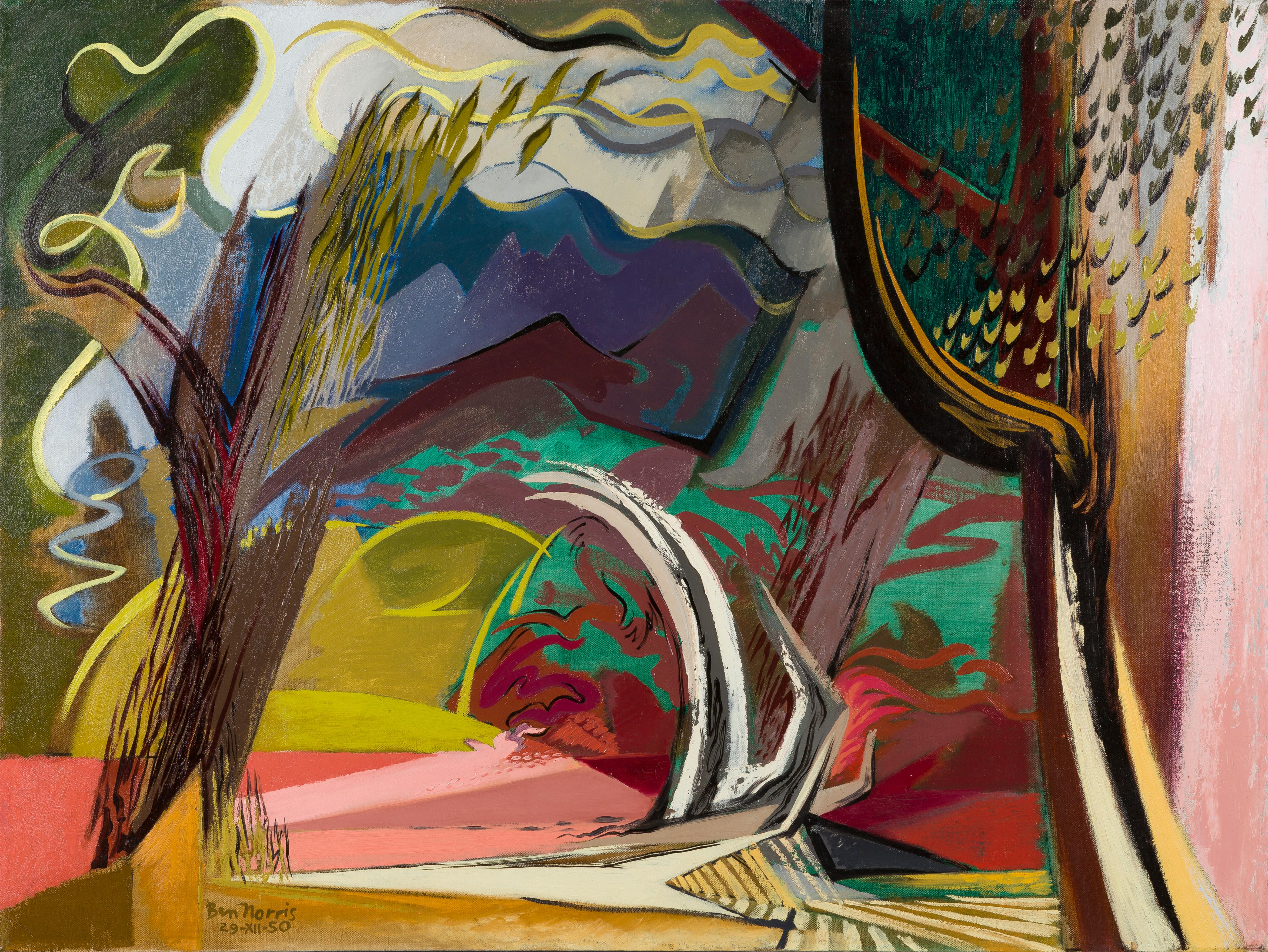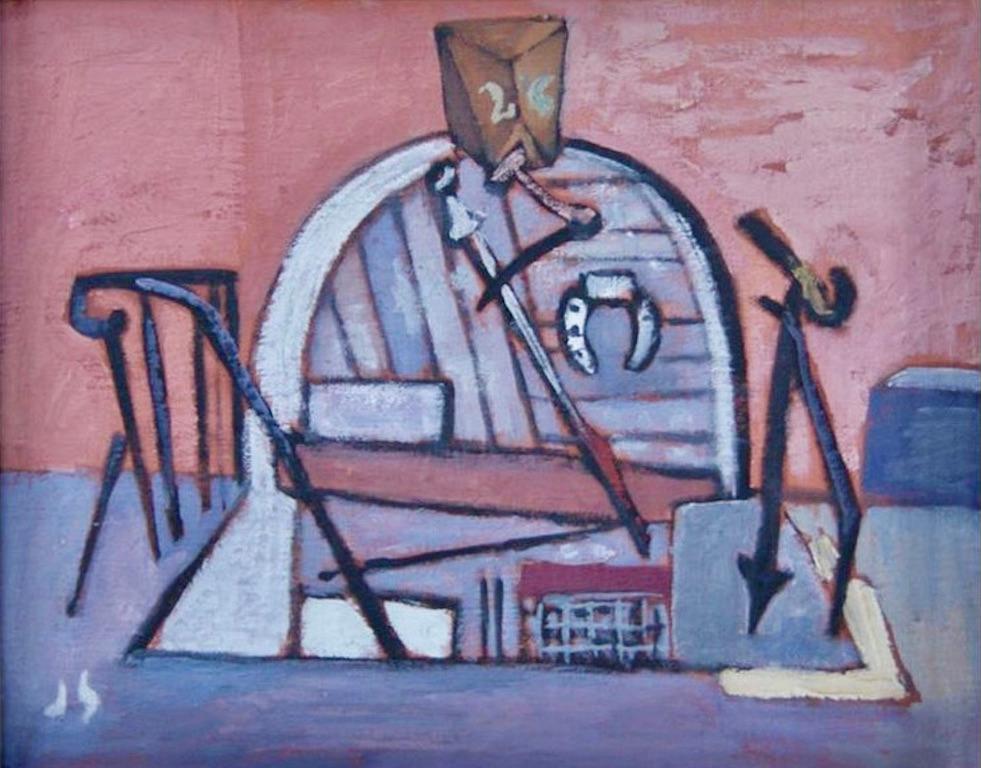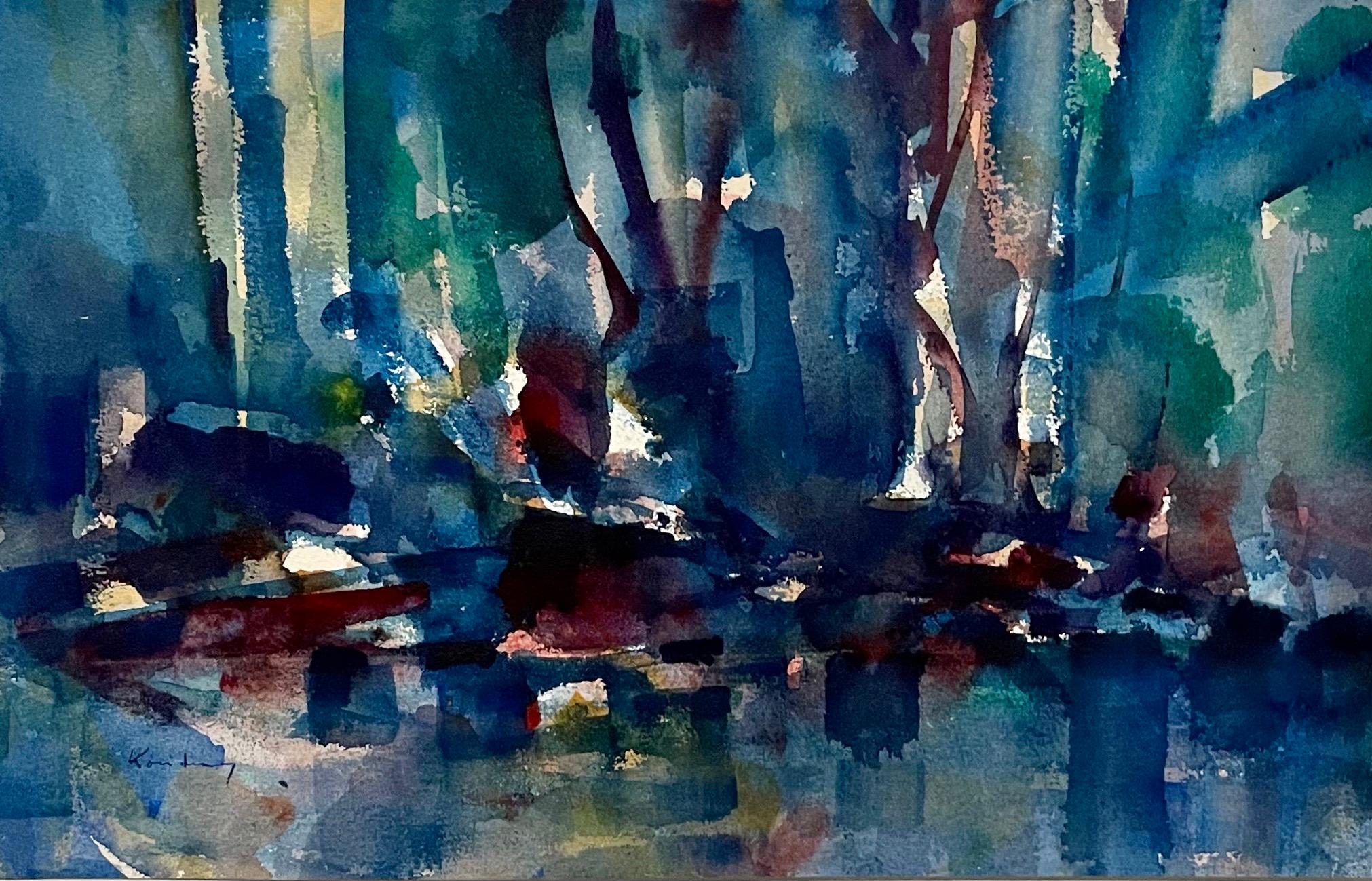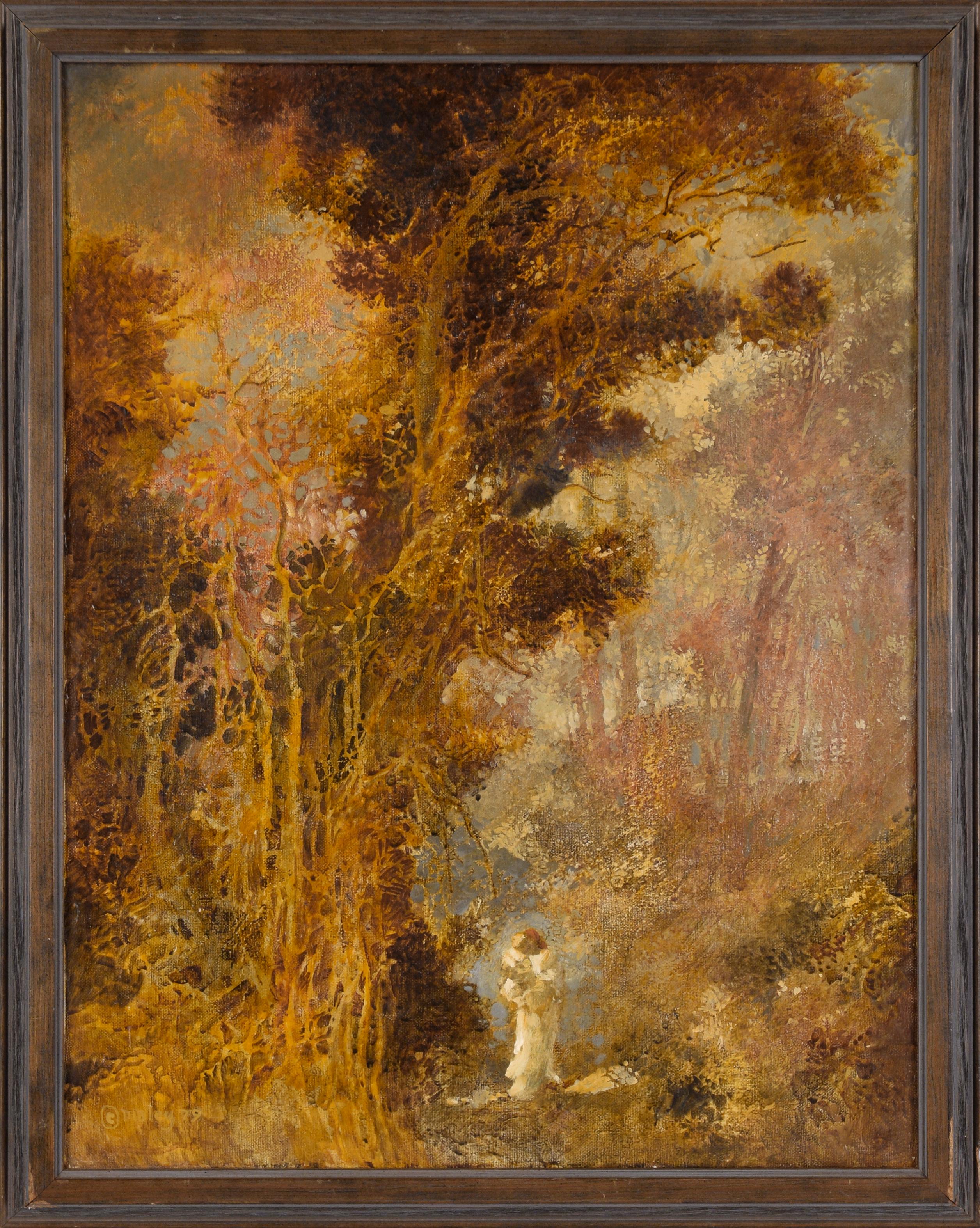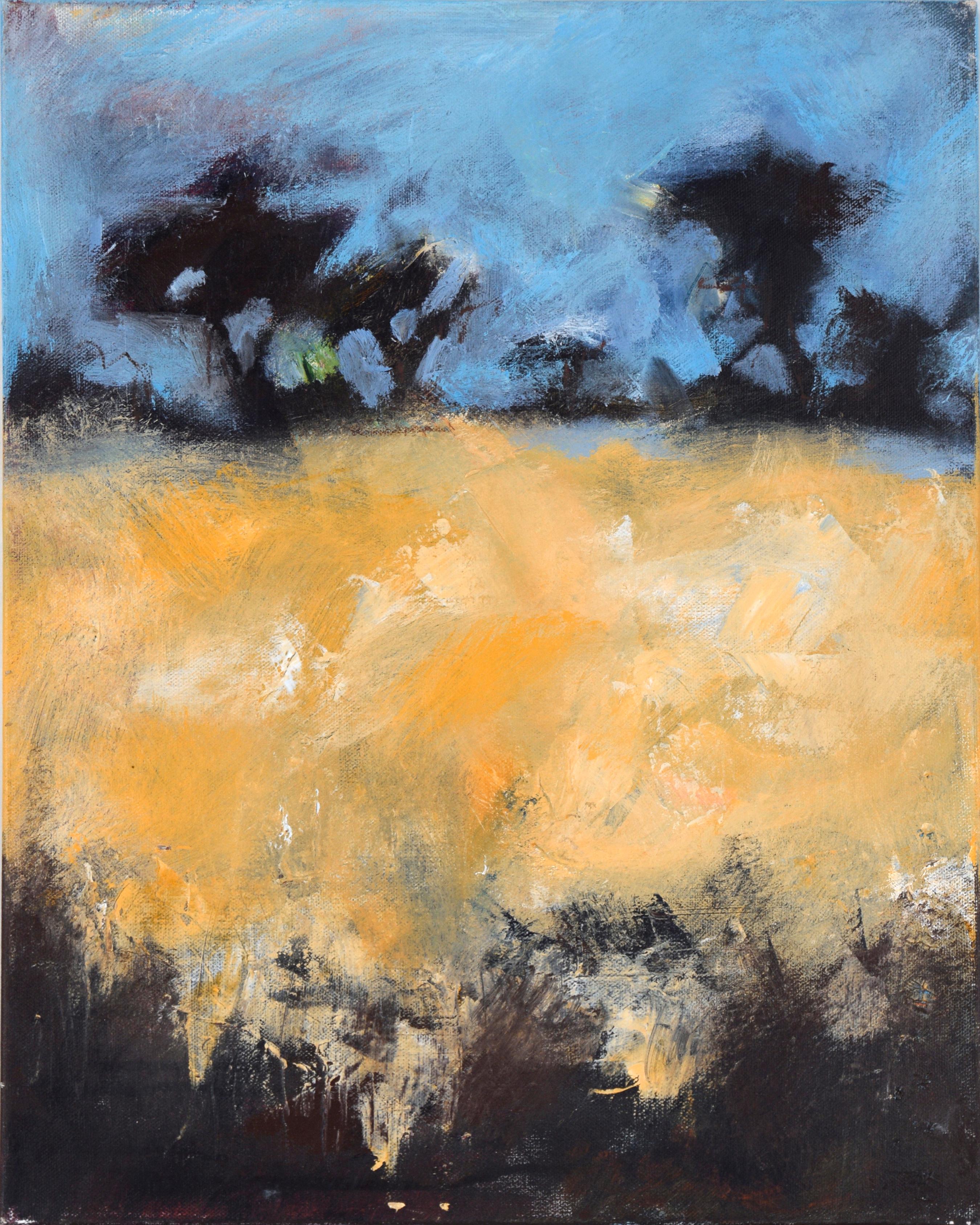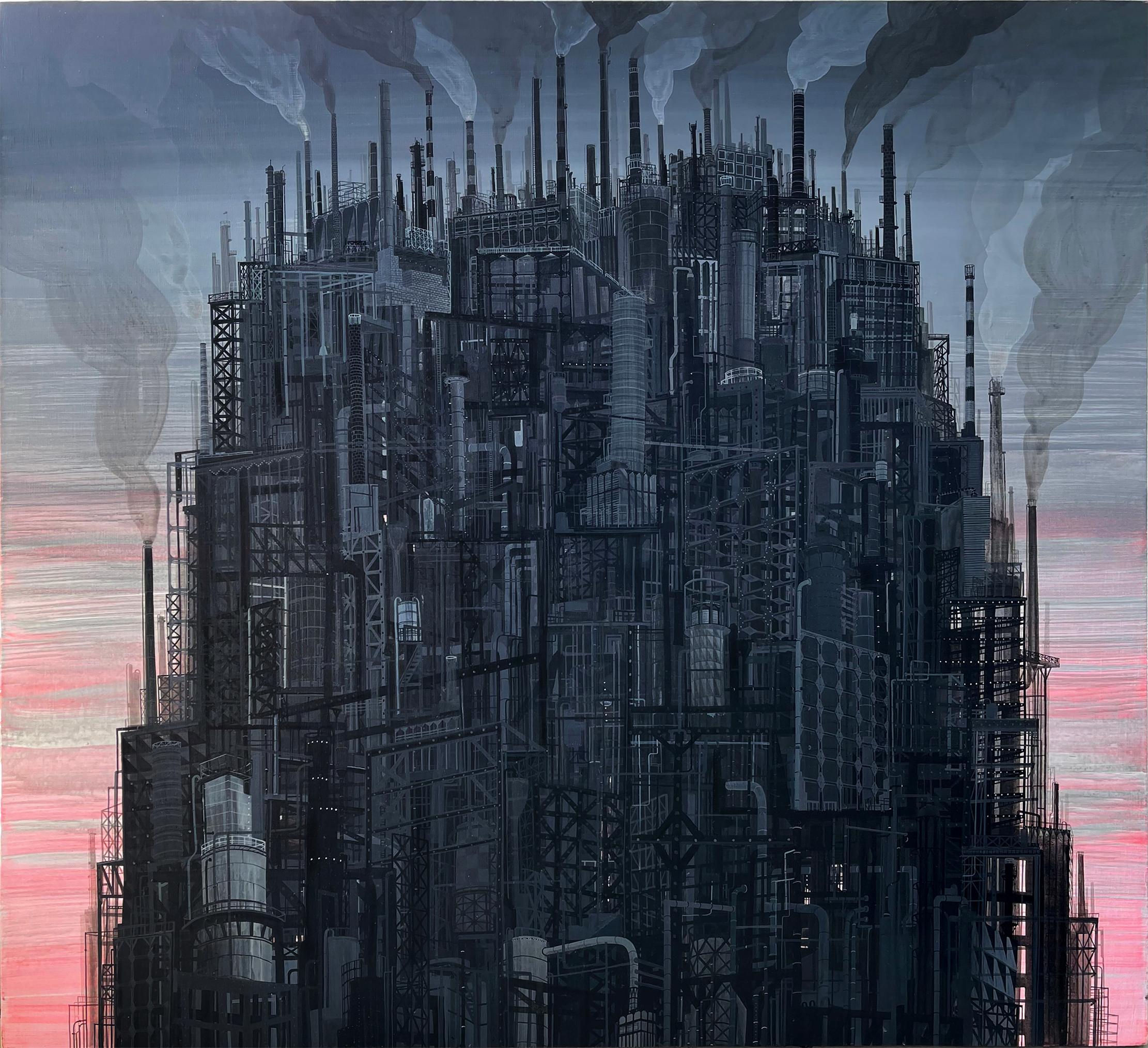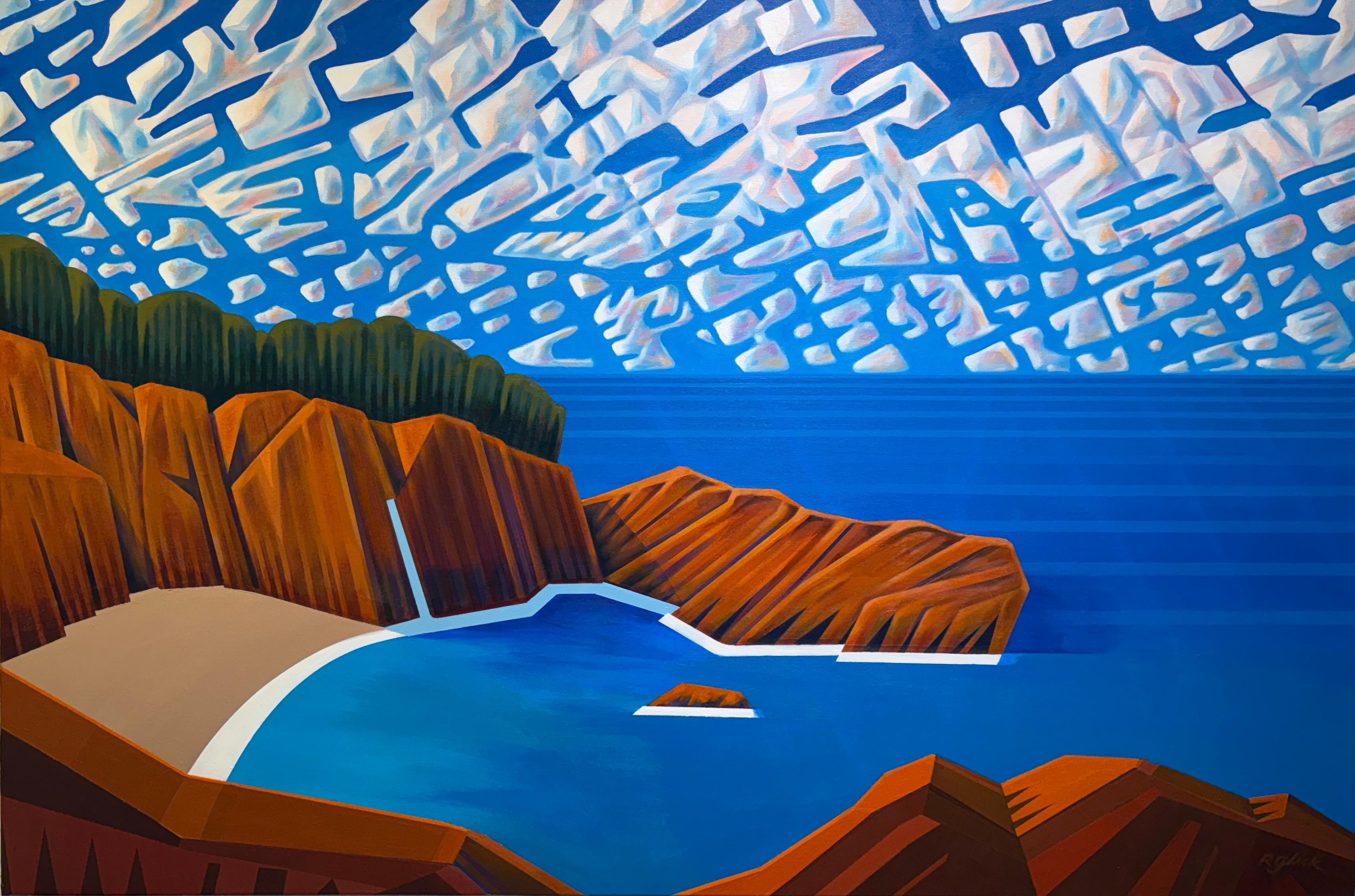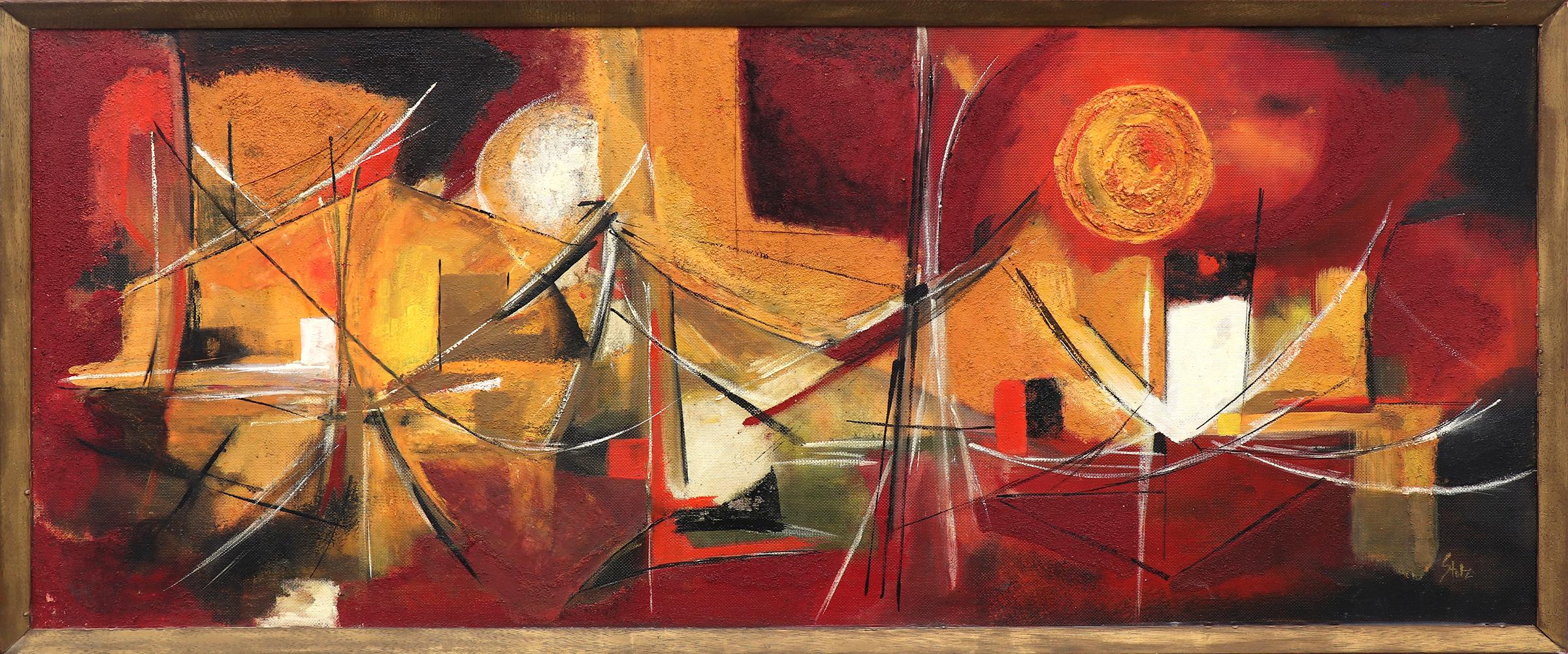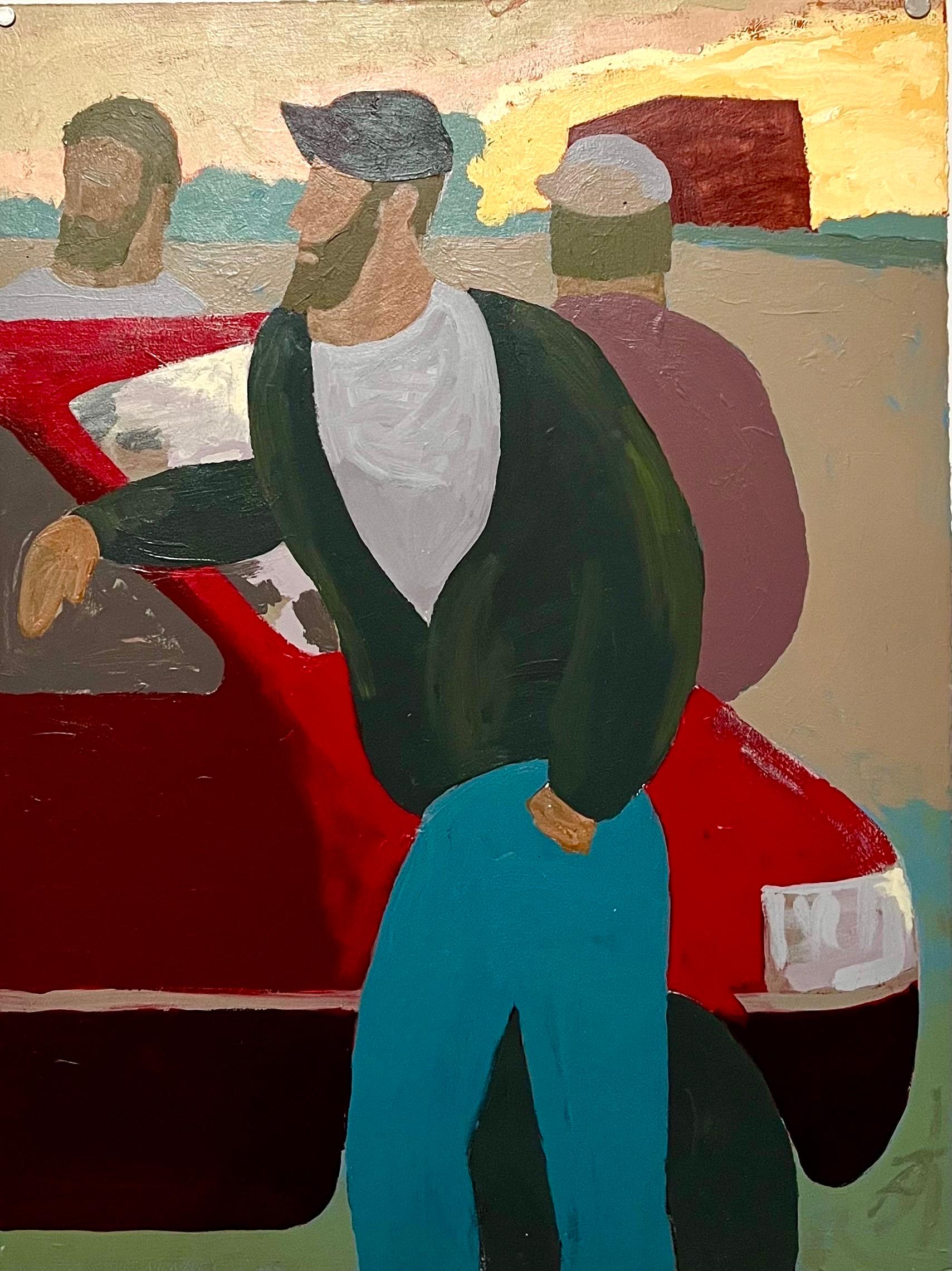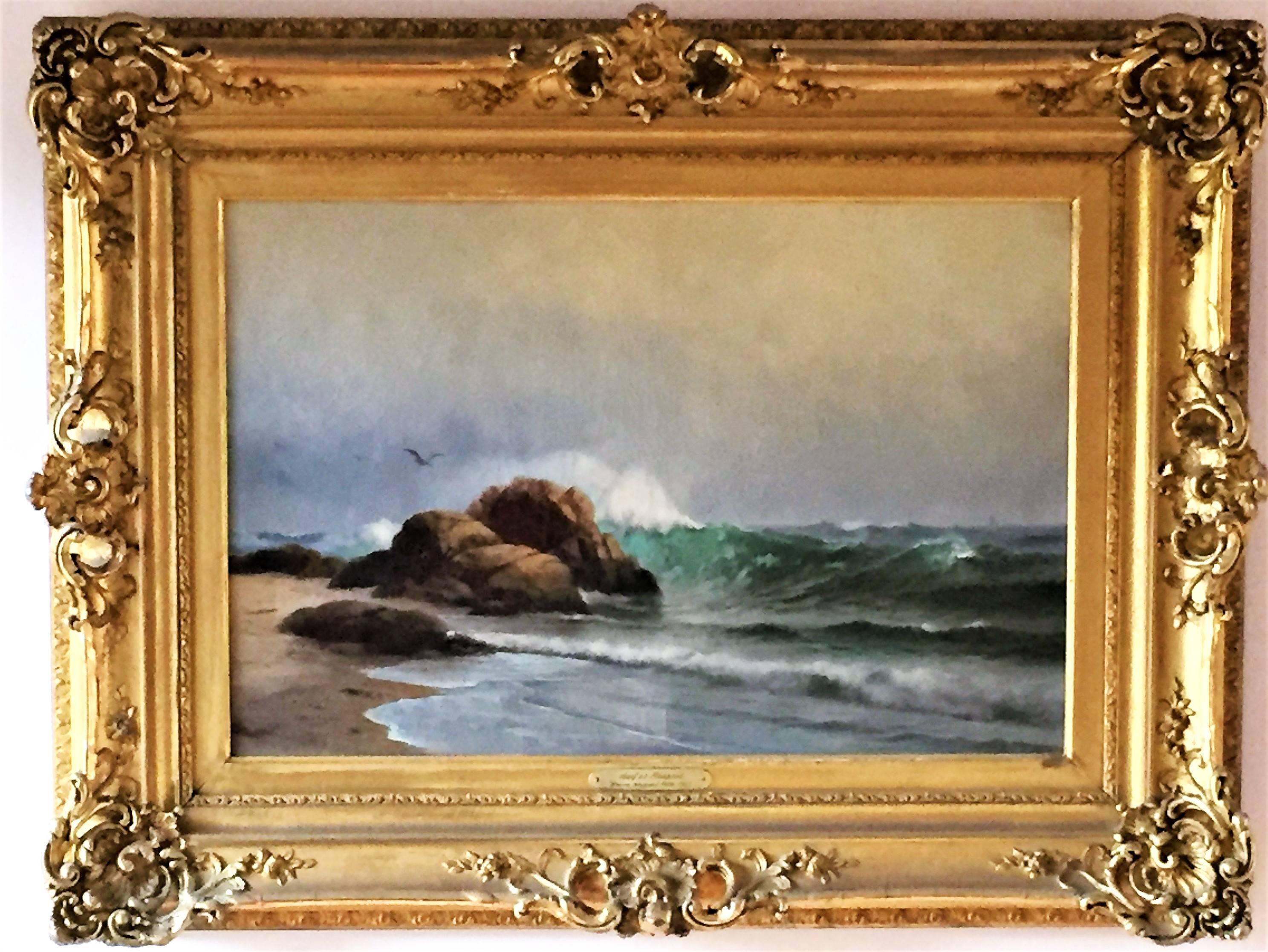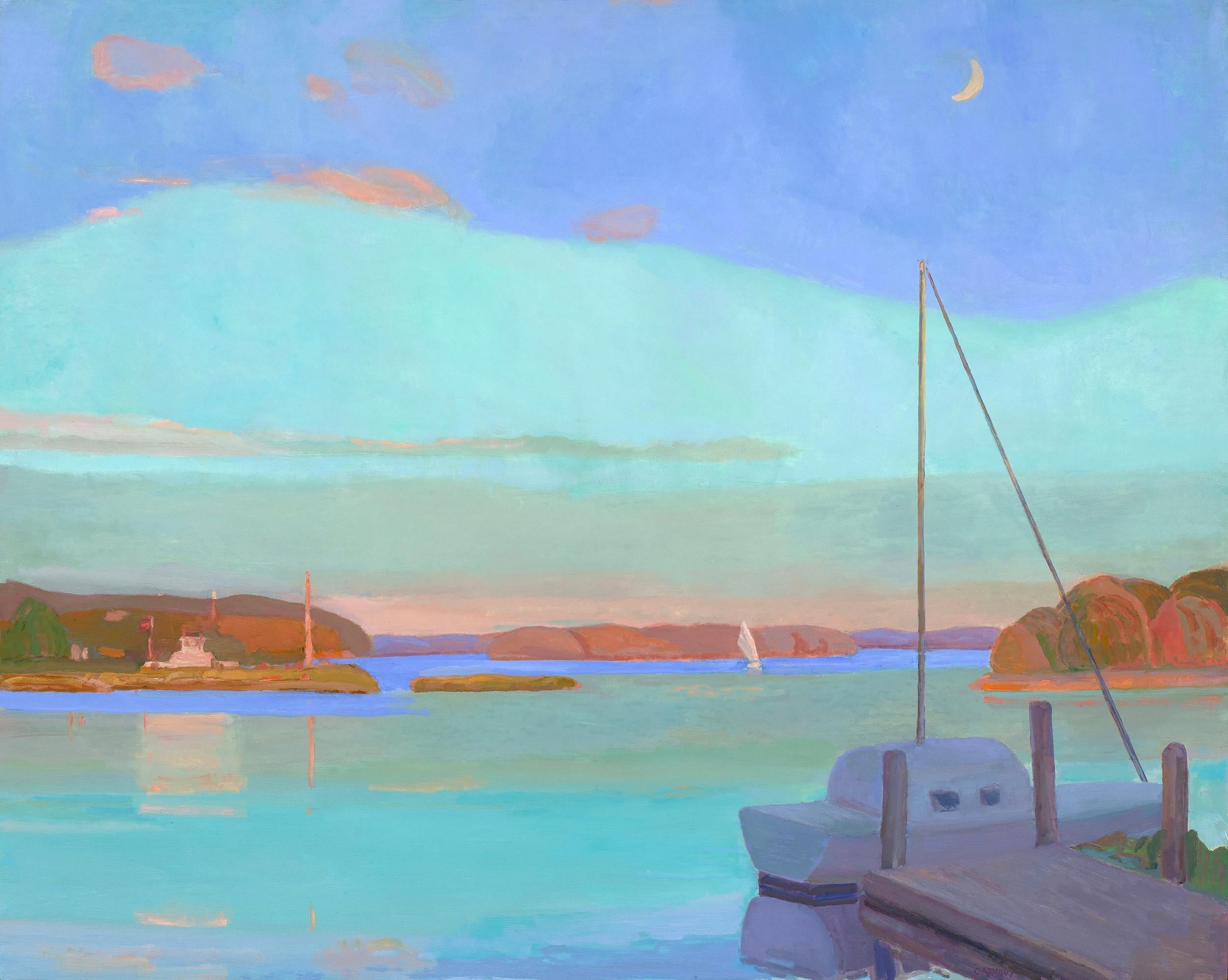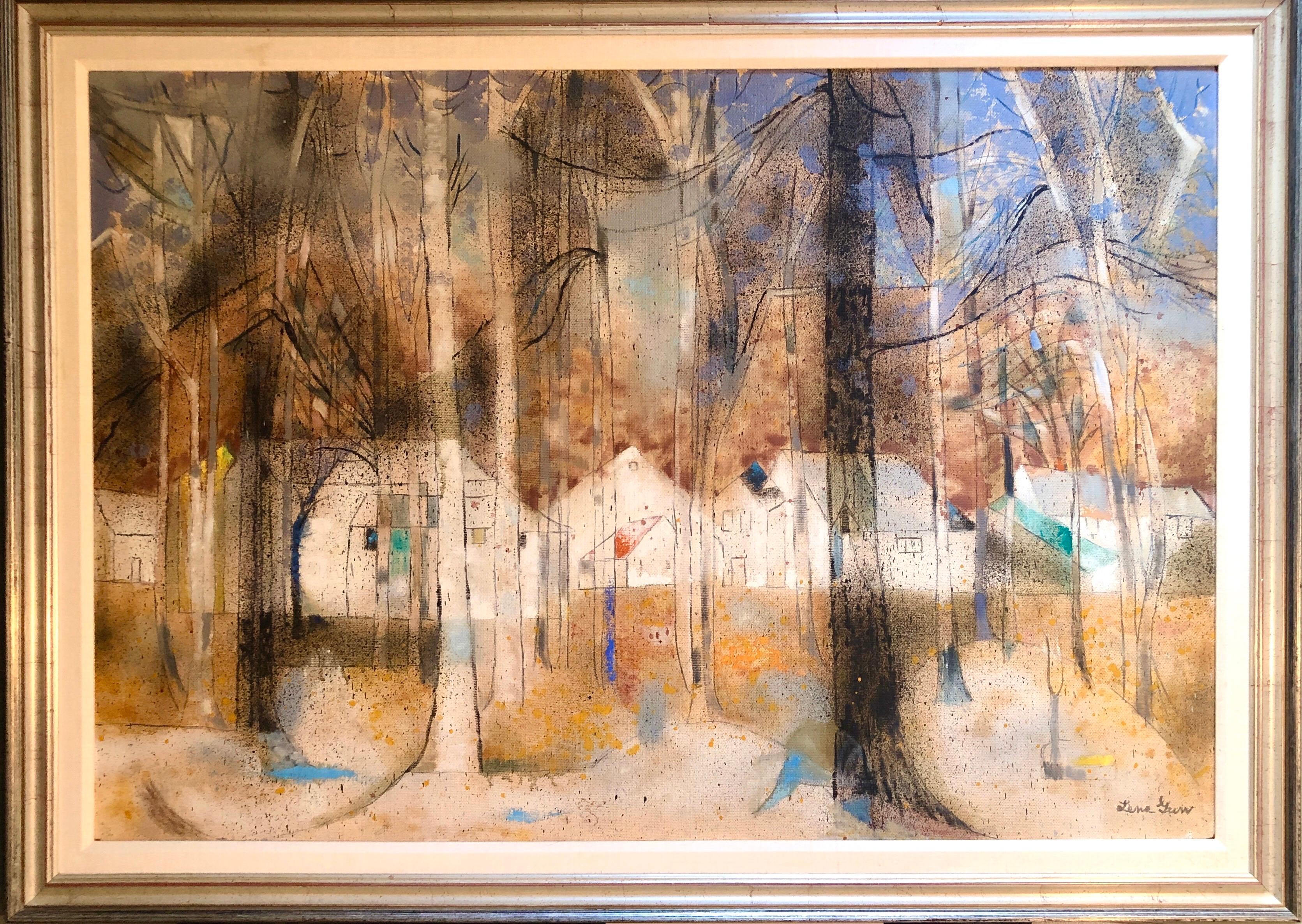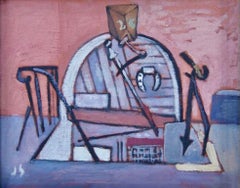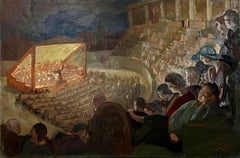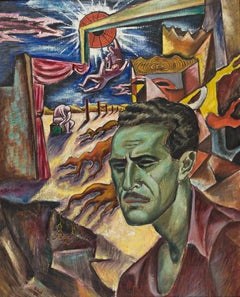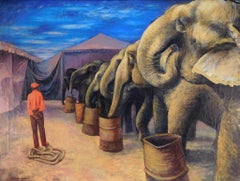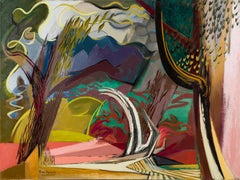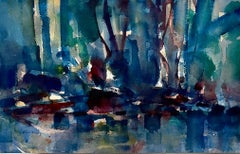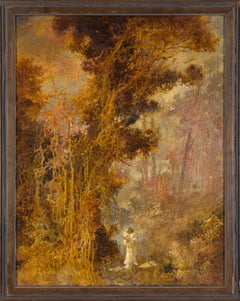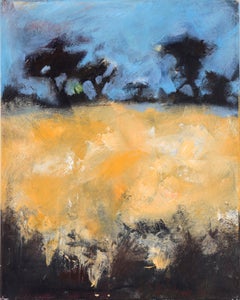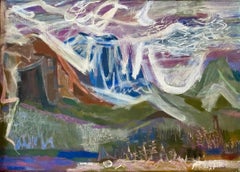
GLACIER PARK 1940s WPA Mid-Century Realism to Abstraction American Modernism
View Similar Items
Want more images or videos?
Request additional images or videos from the seller
1 of 6
Vincent Campanella 1GLACIER PARK 1940s WPA Mid-Century Realism to Abstraction American Modernismc. 1949
c. 1949
About the Item
- Creator:Vincent Campanella 1 (1915 - 2001)
- Creation Year:c. 1949
- Dimensions:Height: 24 in (60.96 cm)Width: 31 in (78.74 cm)Depth: 2 in (5.08 cm)
- Medium:
- Movement & Style:
- Period:
- Condition:See description.
- Gallery Location:New York, NY
- Reference Number:1stDibs: LU115627626822
About the Seller
5.0
Platinum Seller
Premium sellers with a 4.7+ rating and 24-hour response times
Established in 2008
1stDibs seller since 2019
190 sales on 1stDibs
Authenticity Guarantee
In the unlikely event there’s an issue with an item’s authenticity, contact us within 1 year for a full refund. DetailsMoney-Back Guarantee
If your item is not as described, is damaged in transit, or does not arrive, contact us within 7 days for a full refund. Details24-Hour Cancellation
You have a 24-hour grace period in which to reconsider your purchase, with no questions asked.Vetted Professional Sellers
Our world-class sellers must adhere to strict standards for service and quality, maintaining the integrity of our listings.Price-Match Guarantee
If you find that a seller listed the same item for a lower price elsewhere, we’ll match it.Trusted Global Delivery
Our best-in-class carrier network provides specialized shipping options worldwide, including custom delivery.More From This Seller
View AllWPA American Scene Modernism 20th Century NYC Industrial "Cellar with Horseshoe"
By Joseph Solman
Located in New York, NY
"Cellar with Horseshoe" WPA American Scene Modernism 20th Century NYC Industrial
Joseph Solman (1909-2008) "Cellar with Horseshoe," 16 x 20 inches, oil on canvas
circa 1938, initial...
Category
1930s American Modern Landscape Paintings
Materials
Canvas, Oil
"Concert" Early 20th Century WPA Modernism American City Landscape Scene Ashcan
By Michael Loew
Located in New York, NY
"Concert" Early 20th Century WPA Modernism American City Landscape Scene Ashcan
The size of the canvas 28 3/4 x 43 1/4 inches. The painting comes directly from the artist's estate. It is signed lower right as well as signed, titled and dated verso.
We have available more than two dozen paintings and works on paper from the 1930s - 80s that come directly from the Loew estate.
BIO
Michael Loew (1907 – 1985) was the son of a New York City baker. After high school, he was an apprentice to a stained-glass maker, and from 1926-1929, he studied at the Art Students League. In 1929, he traveled to Paris, North Africa, Germany, and Italy with a group of artists. When he returned to New York City in 1931, the Great Depression hit Loew unexpectedly, and for the next two years he paid his apartment rent with his paintings. In 1935, he found work with the WPA where he painted murals and partnered up with longtime friend Willem de Kooning in 1939 on a mural for the Hall of Pharmacy at the New York World’s Fair. Their friendship lasted for the rest of their lives. In the mid-30’s he painted in Mexico and the Yucatán documenting the construction of a U.S. Naval airbase on Tinian Island. It was from this airbase that the Enola...
Category
1920s American Modern Figurative Paintings
Materials
Canvas, Oil
"Drama Teacher" 1938 WPA Mid 20th Century American Theatre Surrealism Modernism
By Leon Bibel
Located in New York, NY
"Drama Teacher" 1938 WPA Mid 20th Century American Theatre Surrealism Modernism. 30 x 24 inches. Oil on Canvas. Signed land dated ’38 lower left.
The photograph in the listing depicts the artist's friend who taught drama and about whom the painting is based
Painter, printmaker and sculptor, Leon Bibel was born in San Francisco in 1913. He trained at the California School of Fine Arts and received a scholarship to study under the German Impressionist Maria Riedelstein. He worked in collaboration with Bernard Zackheim, a student of Diego Rivera, to create frescoes for the San Francisco Jewish Community Center and the University of California Medical School.
In 1936 Bibel moved from California to join the Federal Art Project at Harlem Art...
Category
1930s American Modern Figurative Paintings
Materials
Canvas, Oil
Circus Elephants American Modernism WPA Regionalism Mid-Century Modern Oil
Located in New York, NY
Circus Elephants American Modernism WPA Regionalism Mid-Century Modern Oil. Signed lower left.
Not much is known about Marco de Marco, but just look at...
Category
1930s American Modern Animal Paintings
Materials
Canvas, Oil
Boys Swimming Industrial Landscape WPA Mid 20th Century Social Realism Modernism
By Henry Ernst Schnakenberg
Located in New York, NY
Boys Swimming Industrial Landscape WPA Mid 20th Century Social Realism Modernism
Henry Schnakenberg (1982 - 1970)
Boys Swimming Industrial Landscape
11 1/2 x 15 1/2 sight
Oil on Canvas
Signed lower left
14 1/2 x 18 1/2 inches, Framed
Bio
In many cases, American artists visited the Armory Show in New York in 1913, and returned to their studios to react to or against what they saw. However, for Henry Ernest Schnakenberg it was much more life altering. Prior to visiting this important exhibition of American and European modernist art...
Category
1940s American Modern Figurative Paintings
Materials
Canvas, Oil
NYC 1939 World's Fair Mural Study American Scene WPA Modern Mid 20th Century
Located in New York, NY
NYC 1939 World's Fair Mural Study American Scene WPA Modern Mid 20th Century
Eugene Savage (1883 – 1978)
1939 World’s Fair Mural Study
45 x 30 inches
Oil on Canvas
Signed lower right
The painting is part of a 1,000 piece collection of art and objects from the 1939 World’s Fair. The collection as a whole is available.
Savage created the mural for the facade of the Communications Building. An image of the completed mural, along with a published postcard, is part of the listing. Note the center top female figure, she resembles the figure in the offered painting.
BIO
Eugene Francis Savage was born in Covington, Indiana 1883. He underwent various forms of art training in the early years. He was a pupil of The Corcoran Gallery and The Art Institute of Chicago, and was later awarded a fellowship to study in Rome at The American Academy.
While under the spell of that ancient city the young artist began to render historic figures that were suitable for the classic style needed for mural painting in the traditional manor. During this period he was able to study and observe Roman and Greek sculpture, although much of the academic training was accomplished by using plaster casts along with the incorporation of live models. This method survived and was used efficiently throughout Europe and the United States.
After leaving the Academy, Savage was commissioned to paint numerous murals throughout the United States and Europe. This artist received acclaim for the works he produced while under commissions from various sources. This young master was a contemporary of Mexican muralists David Alfaro Siqueiros (1896-1974), Jose Clemente Orozco (1883-1949) and Diego Rivera (1886-1957). In this period he was to show the influence of his contemporaries in formulating a modern style. Savage also played a vital role in the WPA Federal Art program, and he was a member of The Mural Art Guild..
Savage was elected an associate member of The National Academy of Design in 1924 and a full member in 1926. From 1947, he held a professorship at Yale University where he taught mural painting, and some of his students went on to significant positions.
By this time the artist had painted large-scale murals at Columbia, Yale University, Buffalo N.Y., Dallas, Texas, Chicago, Indiana, along with other commissioned works. He also achieved recognition for a series of murals commissioned by the Matson Shipping Line and completed around 1940. For this commission, Savage made many exacting studies of customs and folkways of the Hawaiian natives. However, the award-winning murals were not installed as planned but were put in storage during the war years when the ships were used for troop transportation and were in danger of attack.
However the mural images were reproduced and distributed by the shipping company including nine of the mural scenes that were made into lithographed menu covers in 1948. The American Institute of Graphic Arts awarded certificates of excellence for their graphic production, and the Smithsonian Institute exhibited the works in 1949. Today Savages' Hawaiian Art production is held in high regard by collectors of Hawaiian nostalgia.
In later years the artist focused his attention on a theme that dealt with the customs and tribal traditions of the Seminole Indians of Florida. He produced many variations of this theme throughout his lifetime, and the pictures were usually modest scale easel paintings, precise and carefully delineated. Many of these pictures incorporate Surrealistic elements and show some minor stylistic influences of the painters Kay Sage...
Category
1930s American Modern Figurative Paintings
Materials
Canvas, Oil
You May Also Like
Landscape Variations No. 2 - Sardonic Interlude
By Ben Norris
Located in Boston, MA
Signed and dated lower left: "Ben Norris / 29 - XII - 50". With label verso: "Landscape Variations II - Sardonic Interlude / by Ben Norris". From the Estate of the Artist.
Exhibite...
Category
Mid-20th Century American Modern Landscape Paintings
Materials
Canvas, Oil
Modernist Abstract Expressionist Watercolor Painting Bauhaus Weimar Pawel Kontny
By Pawel Kontny
Located in Surfside, FL
Abstract watercolor composition bearing the influence of the earlier color-block compositions of Paul Klee.
Pawel August Kontny, (Polish-German-American artist) He was born in Laurahuette, Poland, in 1923, the son of a wealthy pastry shop owner. In 1939 he began studying architecture in Breslau where he was introduced to the European masters and to the work of some of the German Expressionists, soon afterward banned as "degenerate artists" and removed from museums throughout Germany by the Nazi regime. His studies were interrupted by World War II. Drafted into the German army, traveling in many countries as a soldier, he sketched various landscapes but in 1945, he was captured and held as a prisoner of war in Italy. After the war, he studied at the Union of Nuremberg Architects to help design buildings to replace ones destroyed in the war. He recorded his impressions of the local population and the landscapes through his watercolors and drawings. Pawel Kontny thereafter moved to Nuremberg, Germany, becoming a member of the Union of Nuremberg Architects and helping to rebuild the city's historic center. He soon decided to concentrate on his professional art career. He married Irmgard Laurer, a dancer with the Nuremberg Opera. Pavel Kontny 's career as an artist was launched with his participation in an all German exhibition, held at the Dusseldorf Museum in 1952. He held one-man shows in Germany, Switzerland and the United States. During his trip to the United States in 1960, Kontny became instantly enamored with Colorado, and decided to relocate to Cherry Hills with his wife and two children. He quickly established himself in the local art community, being affiliated for a time with Denver Art Galleries and Saks Galleries. His subject matter became the Southwest. During this time he received the Prestigious Gold Medal of the Art Academy of Rome. His extensive travel provided material for the paintings he did using his hallmark marble dust technique. he also worked equally in pastel, watercolor, charcoal and pencil-and-ink. in a style which merged abstraction and realist styles, influenced by Abstract Expressionist painting and South Western American landscapes. In the early 1960s he was one of only a few European-born professional artists in the state, a select group that included Herbert Bayer (1900-1985), a member of the prewar Bauhaus in Weimar and Dessau, Germany, and Roland Detre (1903-2001), a Hungarian modernist painter. As a Denver, Colorado resident, Pavel Kontny exhibited at galleries and museums throughout the United States, Germany and Japan. There, he was inspired by frequent trips to Native American pueblos in the Southwest, as well as by the study of the Plains Indians of Montana and Wyoming. Over the years Kontny had a number of students and generously helped young artist by hosting exhibitions at his Cherry Hills home. For many years he generously donated his paintings to support charitable causes in Denver. Influences during his European years included German pastelist C.O. Muller, German Informel painter Karl Dahmen and Swiss artist, Hans Erni. In the early 1950s his painting style showed the influence of the Die Brücke (The Bridge), a group of German expressionist artists formed in Dresden in 1905 who had a major impact on the evolution of modern art in the twentieth century in Germany. By the middle of the decade his style incorporated more referential abstraction and total abstraction, resulting in part from his study of Hans Hartung, a German artist based in Paris who exhibited his gestural abstract work in Germany. The American moon landing in 1969 inspired Paul Kontny...
Category
20th Century American Modern Landscape Paintings
Materials
Canvas, Oil
Woman and Child in the Woods - Midcentury Abstracted Landscape in Oil on Canvas
Located in Soquel, CA
Woman and Child in the Woods - Midcentury Abstracted Landscape in Oil on Canvas
Dramatic abstracted painting of a woman holding a child in the woods by Maley (20th Century). This pi...
Category
1970s American Modern Landscape Paintings
Materials
Canvas, Oil, Stretcher Bars
Abstracted Landscape in Acrylic on Wrapped Canvas
By Ilana Ingber
Located in Soquel, CA
Abstracted Landscape in Acrylic on Wrapped Canvas
Vibrant landscape by Ilana Ingber (American, b. 1984). A golden field stretches out towards the horizon, where silhouettes of trees...
Category
2010s American Modern Abstract Paintings
Materials
Canvas, Acrylic, Stretcher Bars
Doledrum ( Industrial Environmental Pollution
Located in Miami, FL
Out of many come one. A huge back mountain is formed out of scores of gas spewing smokestacks. The foreboding back mass fills most of the pictorial area. As one gets closer to the canvas, the complexity of the mass if revealed in low on contrast as we see the diverse variety of the stacks with accompanying petrochemical architecture. Above the stacks, plums of air pollutants like sulfur dioxide and nitrogen oxides rise gracefully into the atmosphere. The artist focuses less on the by-product of the stacks and more on his giant pollution machine that he has so astutely rendered. The work is mostly monochromatic but the artist has indicted a red tonality of a sunset/sunrise that offsets the charcoal blacks and grays.
______________________________________________
Submitted by Tamarind Institute
Ian Davis...
Category
Early 2000s American Modern Landscape Paintings
Materials
Canvas, Acrylic
"The Cove" by Robert Glick - Large Vivid Geometric Seascape - Contemporary Art
Located in Carmel, CA
Robert Glick (American, born 1950)
"The Cove" 2024
Acrylic paint, Canvas, Stretcher bars
The artist signed the bottom right and back of the painting.
This painting by Robert Glick c...
Category
2010s American Modern Landscape Paintings
Materials
Canvas, Acrylic, Stretcher Bars
$12,000 Sale Price
20% Off
Recently Viewed
View AllMore Ways To Browse
Marc Chagall Jerusalem Windows
Miro Grand
Pablo Picasso Dance
Painting Of Tea Set
Parisian Winter
Peacock Print
Rock Hudson
Salvador Dali Religious
Vintage Bath Photography
White Resin Abstract Sculpture
15th Century Italian Painting
1965 Watch
Blue Dog George Rodrigue
C Alphabet
Clown Shows
French Railway Travel Poster
Gold World Map
Jean Michel Basquiat Lithograph
